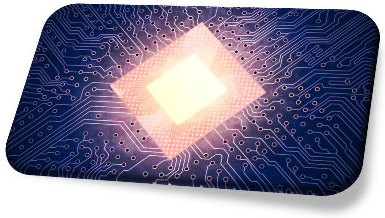- Our People
- Engineering Courses
- Built Environment Courses
- Students
- Engagement, News and Events
- Solar Car Website
-
Research
- - Centre for Infrastructure Engineering
- - Centre for Advanced Manufacturing Technology
- - Intelligent Infrastructure Engineering
- - Renewable Energy And Water
- - Urban Transformation
- - Advanced Manufacturing
- - Future Materials
- - Advanced Technologies For Human Machine Interface
- - Digital Systems And Design
- MakerSpace
- Work Integrated Learning
- Contact the School
- Higher Degree Research
- Alumni and Industry
- Women Transforming the Built Environment
- Women of Wisdom
- Dean's Merit List Recipients
- Indigenous ASPIRE Program
- Indigenous Strategic Plan
About SET
Solar Energy Technologies
Research and Development Program

The objective of the interdisciplinary research program is the development of novel oxide semiconductors for a wide range of environmentally friendly applications. The program includes both basic and applied research components.
Basic Research
The basic research aims at understanding the effect of point defects on surface vs. bulk semiconducting properties, including charge transport, mass transport, electronic structure as well as reactivity and photoreactivity with oxygen, hydrogen and water. The research includes the determination of the local properties of interfaces, such as external surface and grain boundaries, and the reactions at the gas/solid and liquid/solid interfaces. These properties are considered in terms of adsorption and segregation. It has been shown that the segregation-induced concentration gradients are profoundly influenced by oxygen activity in the gas phase during gas/solid equilibration. The research includes the following topics:
Defect Disorder
The research involves the determination of defect disorder and its effect on properties. The research resulted in derivation of defect disorder diagrams that can be used to determine the effect of oxygen activity on the concentration of both ionic and electronic defects. The defect disorder diagrams may be used for the modification of the Fermi level of pure TiO2 within the range of approximately 1.1 eV involving both n- and p-type regime. The incorporation of donor- and acceptor-type foreign ions leads to more extensive changes of the Fermi level.
Diffusion Data
The oxide system is well defined in the gas/solid equilibrium. Therefore, the formation of well defined systems requires knowledge of the equilibration kinetic data and the related chemical diffusion data. The research program includes the determination of the chemical diffusion coefficient, which can be used to predict the processing conditions. The research program also includes the determination of the self diffusion data for donor- and acceptor-type foreign ions used in the formation of solid solutions.
Charge Transport
The measurements of electrical properties may be used for the determination of both concentration and mobility terms associates with the transport of both ionic and electronic charge carriers.
Low-Dimensional Surface Structure
It has been shown that reactions at the gas/solid and liquid/solid interfaces may result in the formation of low-dimensional surface structures, which exhibit outstanding properties.
Applied Research
The applied research program develops materials and devices for the conversion of solar energy into chemical energy (photocatalysts and photoelectrodes) as well as chemical energy into electrical energy (chemical gas sensors and solid oxide fuel cells). The topics:
Oxide semiconductors
SET has developed an increasingly mature technology of n- and p-type oxide semiconductors with controlled Fermi level. The research aims at processing oxide semiconductors with enhanced performance.
Photocatalysts and photoreactors
The applied research aims at the development of photocatalysts, which have the capacity to remove microbial cells and organic contaminants from water using solar energy as the only driving forced of the process.
Photoelectrodes and photoelectrochemical cells
The program develops photoelectrodes for the generation of hydrogen fuel from water using photoelectrochemical water splitting.
Chemical gas sensors
SET is involved in the development of chemical gas sensor for detection and monitoring of pollution and greenhouse gases in the atmosphere.
Current Research Projects
Development of TiO2-based novel semiconductors for energy conversion
This project determined the effect of donor- and acceptor-type solutes on semiconducting properties, including charge transport and electronic structure. The research aims at the development of novel oxide semiconductors with enhanced performance in the conversion of solar energy to chemical energy required for partial and total water oxidation.
Effect of surface nano-structure on photocatalytic water disinfection
This project develops high-performance photocatalyst for solar water purification. The aim is to enhance performance of TiO2-based semiconductors through imposition of nanostructure.
Effect of segregation of donor- and acceptor-type ions on surface vs bulk properties of TiO2 solid solutions
This research determines the segregation-induced concentration gradients of donor- and acceptor-type ions on surface vs. bulk properties and the characterisation of low-dimensional interface structures.
Effect of intrinsic and extrinsic defects on light-induced water disinfection
The research aims at the modification of semiconducting properties and determination of the effect of semiconducting factor in photocatalytic water purification.
Effect of intrinsic and extrinsic defects on light-induced water oxidation
The research aims at the formation of TiO2-based photocatalysts with enhanced performance.
Effect of surface vs. bulk properties of TiO2 on performance in water oxidation
This project aims at the determination of the effect of surface vs. bulk properties on performance in partial and total water oxidation.
Effect of the surface on gas/solid equilibration for the oxygen/zirconia system
This project aims at the determination of the effect of the surface on performance of zirconia in electrochemical gas sensors.
Research Staff
- A/Prof. Tadeusz Bak
- Prof. Janusz Nowotny
- Dr. Leigh Sheppard
- Prof. Gavin Conibeer, Adjunct Professor, UNSW
- Prof. Sean Li, Adjunct professor, UNSW
- Prof. Graeme Murch, Adjunct Professor, University of Newcastle
- Dr. Kathrine Prince, Adjunct Professor, ANSTO
- Dr. Lou Vance, Adjunct Professor, ANSTO
Mobile options:
